
Mecodema is a genus of large flightless ground beetle (Carabidae) endemic to New Zealand. The genus is very diverse in comparison to the other three New Zealand genera within the subtribe Nothobroscina. Mecodema is geographically widespread across both the North and South Islands, as well as numerous offshore islands, including the Three Kings Is., Poor Knights Is., Aotea and Hauturu, Kapiti Is., Stephens Is., Stewart Is., Chatham Is., Snares Is.

Mecodema oconnori is a large-bodied species of ground beetle that is found mainly on the western regions of the North Island, New Zealand. It is mainly found in native forest habitats, both intact and fragmented, and on the edges of pine plantations. Mecodema oconnori ranges from Otaki, Kapiti Coast to Raglan, but is also found in the Manawatu Gorge and some other eastern localities.
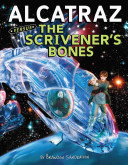
Alcatraz Versus the Scrivener's Bones is a juvenile fiction novel written by American author Brandon Sanderson, published in November 2008 by Scholastic Press. It is preceded by Alcatraz Versus the Evil Librarians.

Harpalus affinis is a species of ground beetle native to the Palearctic, and introduced in the Nearctic and the Australasian region. In Europe, it is only absent in the following countries or islands: the Azores, the Canary Islands, the Channel Islands, Crete, Cyclades, Dodecanese, the Faroe Islands, Franz Josef Land, Gibraltar, Iceland, Madeira, Malta, Monaco, the North Aegean islands, Novaya Zemlya, San Marino, the Savage Islands, Sicily, Svalbard and Jan Mayen, and Vatican City. Its presence on the Balearic Islands and Sardinia is doubtful.
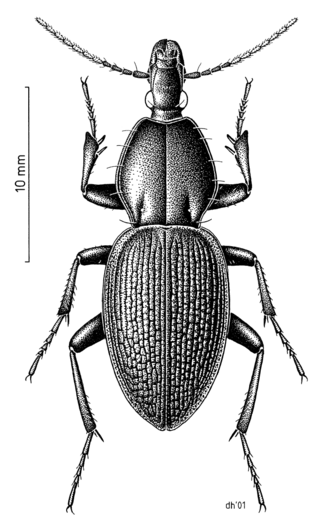
Maoripamborus fairburni is a species of beetle in the family Carabidae, the only described species in the genus. The genus is endemic to the northern North Island of New Zealand, and is most closely related to the Australian genus Pamborus.

Migadopinae is a subfamily of ground beetles in the family Carabidae. There are about 18 genera and more than 40 described species in Migadopinae.
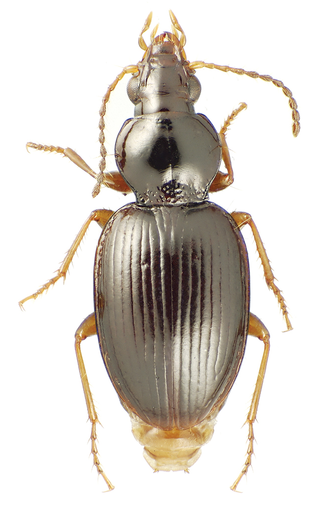
Mecyclothorax is a genus of beetles that contains over 400 described species or subspecies, mostly from the Hawaiian Islands, and Tahiti and Moorea, French Polynesia. Additional radiations have evolved in Queensland, Australia, New Guinea and New Caledonia. The genus has been divided into five subgenera: Eucyclothorax Liebherr 2018 of Australia, Qecyclothorax Liebherr 2018 of Queensland, Australia, Meonochilus Liebherr & Marris, 2009 of New Zealand, Phacothorax Jeannel 1944 of New Caledonia, and the more widely distributed subgenus Mecyclothorax Sharp 1903 [in Australia, the Sundas, New Zealand, the Society Islands, and Hawaii]. The adelphotaxon to Mecyclothorax is hypothesized to consist of the genera associated with Amblytelus Blackburn, also distributed in Australia, and therefore the evolutionary history of Mecyclothorax commenced in Australia.
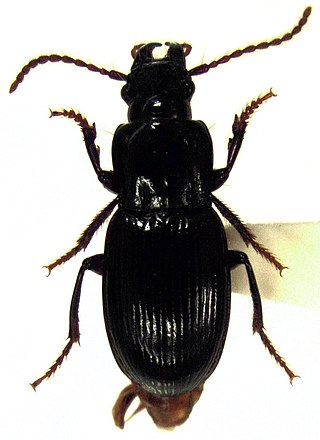
Selenochilus is a genus of beetles in the family Carabidae, endemic to New Zealand, including the following seven species:

Holcaspis is a genus of beetles in the family Carabidae, endemic to New Zealand.

Kaveinga is a genus of wrinkled bark beetles in the family Carabidae.

Trechinae is a subfamily of ground beetles in the family Carabidae. There are 6 tribes, more than 430 genera, and over 6,700 described species in Trechinae.
Waiputrechus is a genus of beetles in the family Carabidae, containing a single species endemic to New Zealand. Waiputrechus cavernicola is known only from a single specimen collected in 1999 by Maree Hunt from a rocky wall inside a cave, Mert's Muddle, near Waipu. It has been classified as "nationally critical" under the New Zealand Threat Classification System.

Selenochilus omalleyi is a species of beetle in the family Carabidae, endemic to New Zealand.

Zographus oculator, the Orange-eyed Long-horn Beetle, is a species of flat-faced longhorn beetles belonging to the family Cerambycidae.

Ross Taylor Bell was an American entomologist with particular interest in the invertebrate natural history of Vermont, United States, and carabid beetles. Together with his wife, Joyce Rockenbach Bell, his work at the University of Vermont was largely taxonomic, where they described more than 75% of the rhysodine species known to science. Ross also wrote a number of seminal papers in his chosen field.

Anisodactylus binotatus is a species of ground beetle native to Europe. It was discovered as being introduced to Canterbury, New Zealand in 1938. Anisodactylus binotatus is a species of Carabidae, also known as the ground beetle family. Although this species of beetle has no official recorded common names, literature from England refers to it as the common shortspur beetle.
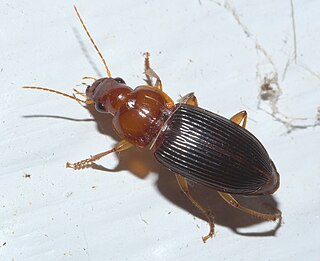
Harpalini is a tribe of a diverse group of ground beetles belonging to the subfamily Harpalinae within the broader family Carabidae. The tribe contains more than 1,900 species.
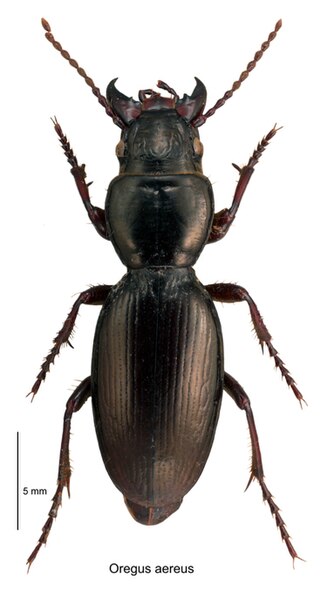
Nothobroscina Roig-Juñent 2000 is one of five subtribes within the ground beetle tribe Broscini. The subtribe consists of ten genera from the Gondwanan countries: Australia, New Caledonia, New Zealand and southern South America. All of these genera are endemic to their respective country, i.e., none of the genera are shared across any of the Gondwanan countries.
The subtribe Creobiina is a group of beetles in the Broscini tribe of Carabidae and is found in Australia, New Zealand and South America.
















